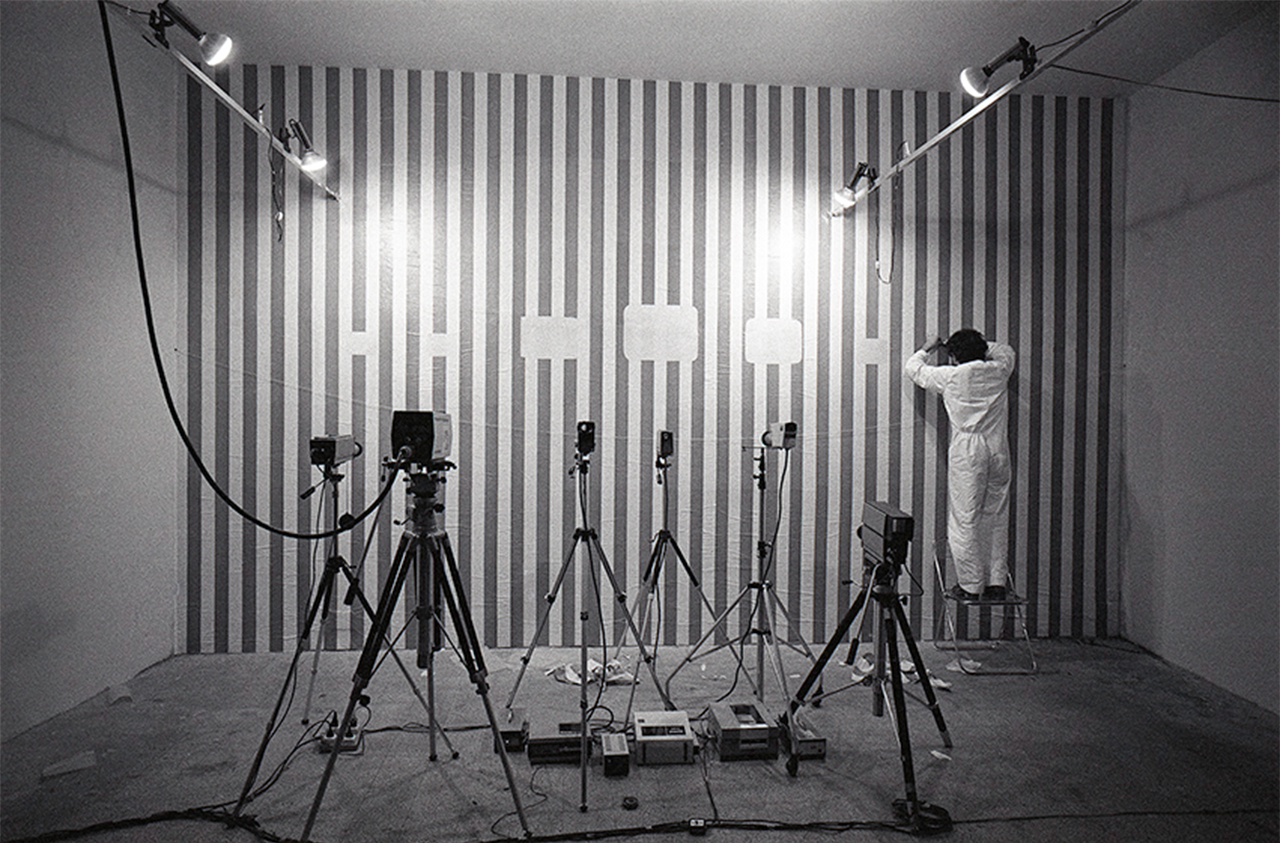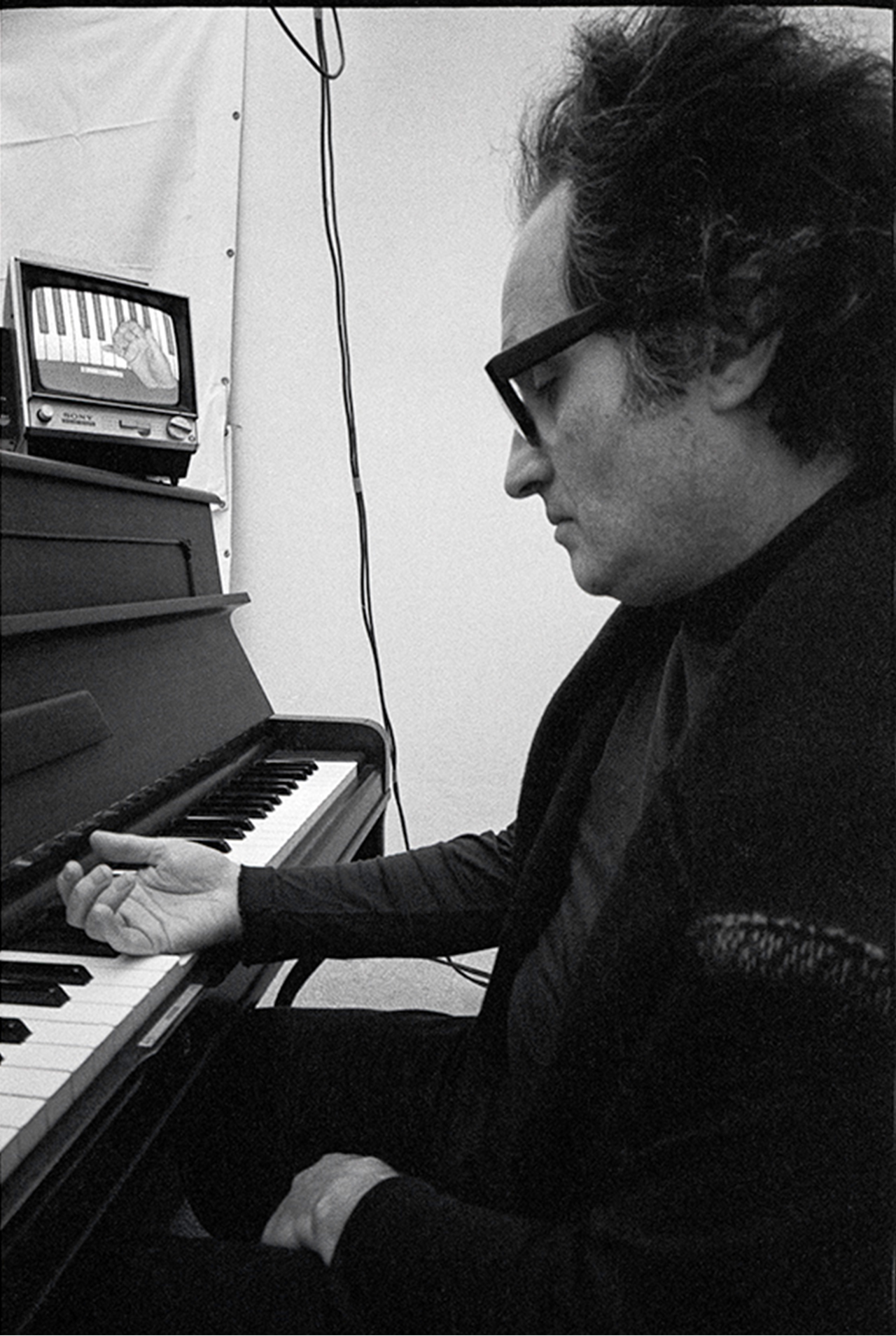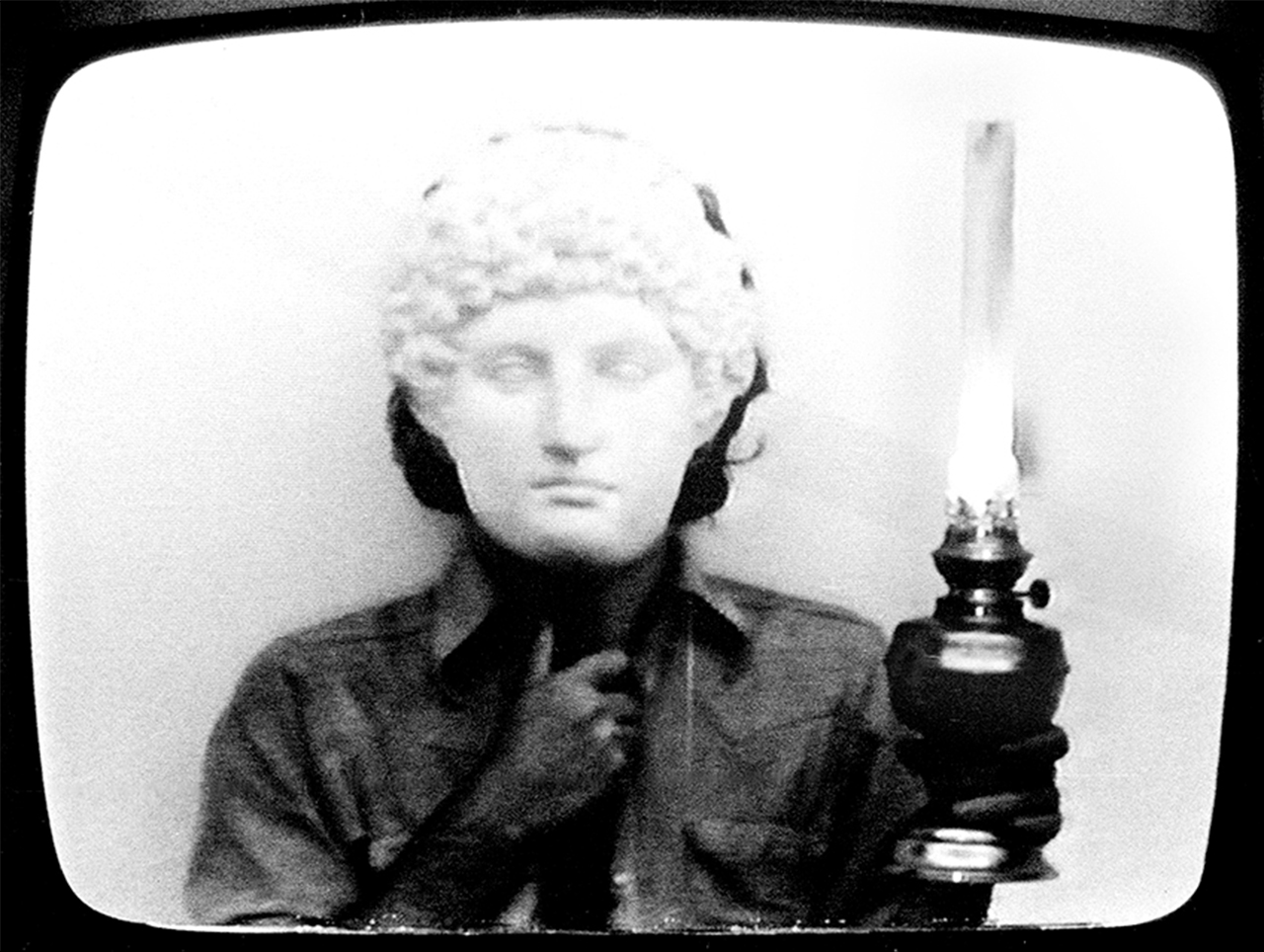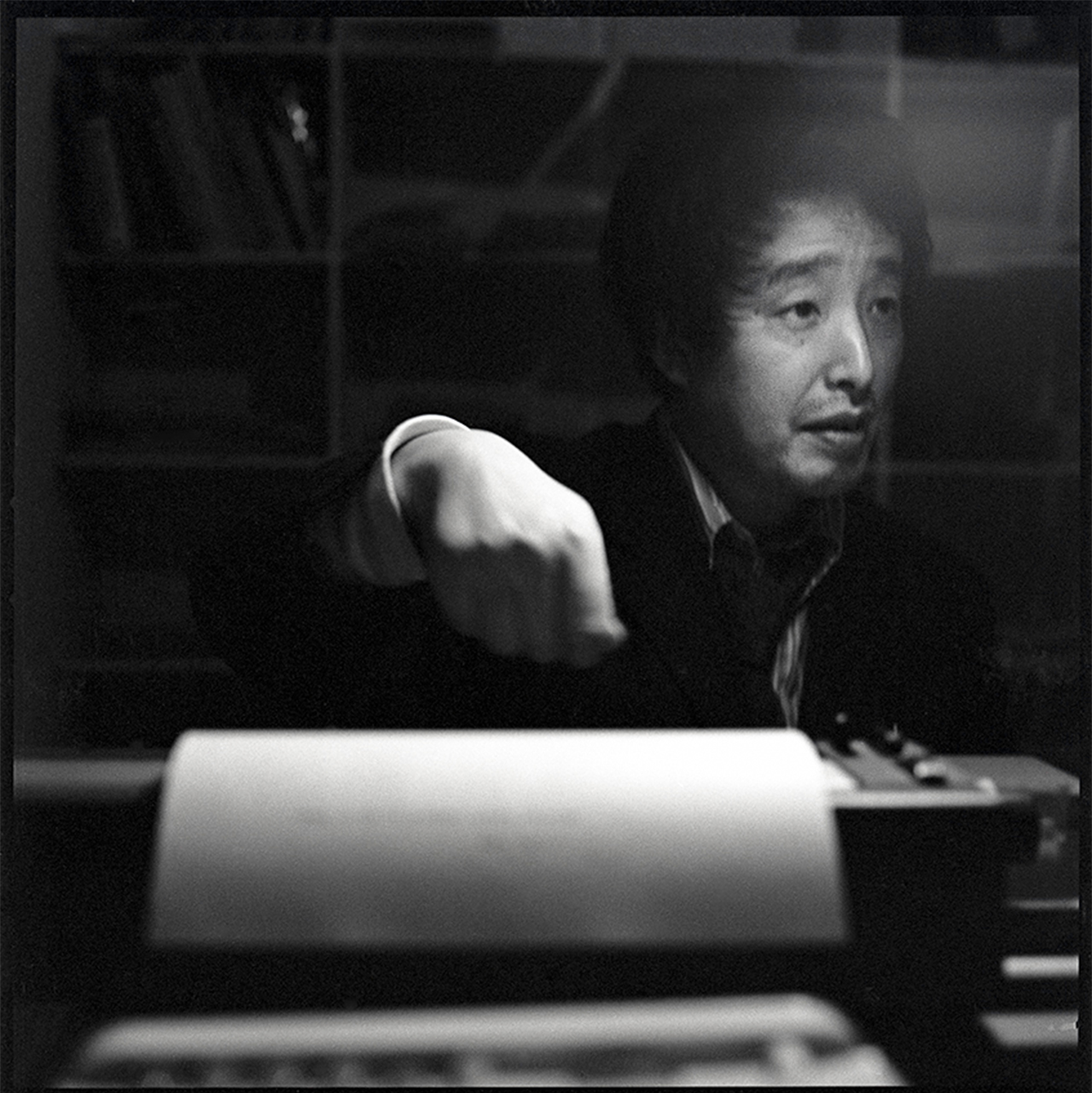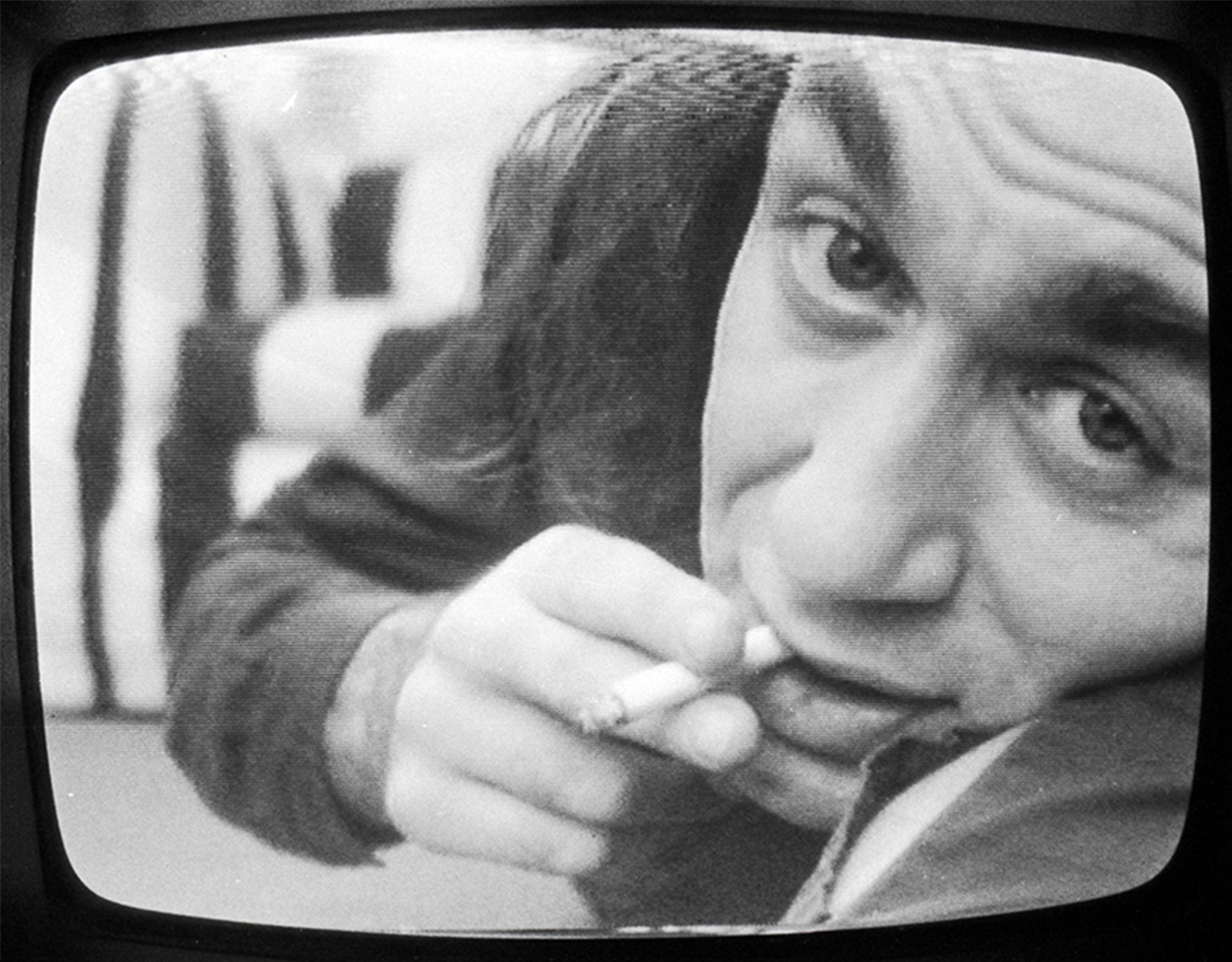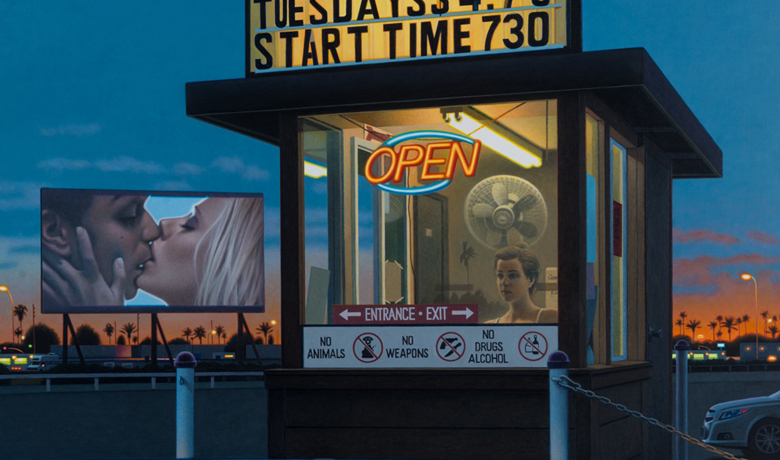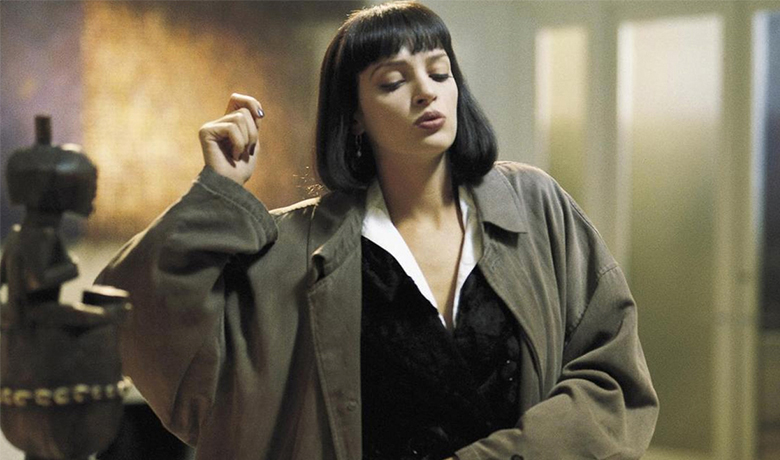#TheItaliaIssue
Let's Talk
THE “SPACE” BEYOND THE SCREEN
// A conversation with Maria Gloria Bicocchi
AN INTERVIEW BY MARIALUISA PASTO'
If the use of video in the 1960s in America was already a common practice for many artists, a real awareness of this means in Italy began to emerge only in the 70s.
The integration of the electronic image in the visual arts had questioned the artistic object even more radically than art forms such as the happenings for instance, allowing itself to finally emancipate from the obsolete and self-referential nature of television device/monitor. This happened in response to the nascent necessity for artists of measuring themselves with new ways of de-structuring the conventional language, an urgency far from trying to fit in labels or definitions, but known to all by the name of video art.
While that was going on, Florence saw the origin of one of the benchmarks of that period – art/tapes/22.
Marialuisa Pastò. In 1972 you and your husband Giancarlo founded art/tapes/22, a pioneer center devoted to experimentation and production that has had a leading role in the process of spreading of video art in Italy. Would this experience be a conscious choice or the natural evolution of the dynamics that were characterizing the artistic scene of that period?
Maria Gloria Bicocchi. Absolutely a natural evolution of the art dynamics of those years: art/ tapes/22 grew up with us and unconcerned of any program or prediction, it was a pure adventure. Now I know that everything has happened because of the clever and perhaps a little unconscious impulse of me and Giancarlo in doing something “with” and not “for” the artists.
MP. Why the video as a medium?
MGB. Art from the last century has shown that a work can be realised by any means, the medium is not the language.
MP. The story of video art develops through the conquest of new technologies. Speaking of technology, how do you think internet has already (affected) – and will affect – the future of art?
MGB. I am always convinced that video art is naturally intended for the web and that seeing it in a museum still means making it an object, and it is wrong.
MP. Art/tapes/22 featured significant names in the Italian and international art scene, such as Bruce Nauman, Nam June Paik, Vito Acconci, Vincenzo Agnetti, Sandro Chia, Alighiero Boetti, Giuseppe Chiari, Gino De Dominicis, Jannis Kounellis, Daniel Buren and many more. What is the video / collaboration to which you are most related and why?
MGB. Jannis Kounellis’s video is the only work left realised through this medium by the great artist and, moreover, it has marked the birth of a great friendship. In addition to these important reasons, I think it is one of the most interesting for the work itself: the Apollo mask is held in front of his face and illuminated by a lantern, thirty minutes in which only his breath smashes the event. A clear example of how the video determines only the instrument, which conveys a language in return; even more significant if compared to those times, when in Europe there were no video artists or video art yet, but just artists and art.
MP. In your opinion, how has the interest of museums and exhibition spaces in general changed in relation to audiovisual language over time (and compared to the past)?
MGB. Very much. Seeing video works in museums is normal now, in the ’70s the exhibitions of these works were rare and exceptional and the televisions so cumbersome to make the event
almost an installation. Now seeing an exhibition by Bill Viola, for example, means to witness extraordinary movable paintings where the support disappears.
MP. Is there an artist in particular you would like to work with?
MGB. I think I’ve worked with all the artists I was interested in. I asked Segal and Dibbets to make a video with us but it did not happen: George Segal replied that he was not interested in video and Jan Dibbets replied that he would come, but it didn’t happen because our adventure lasted just a few years.
MP. Unlike other media, the video has singularities that make it in some ways more accessible. The video art in Italy, however, first struggled to gain its precise position, perhaps because it was eclipsed in part by the cinema, strong in a consolidated theoretical structure, and that recorded the applause of an ever-widening audience.
In your opinion, in which state is the current Italian art scene?
MGB. Video art meant as “movement” is not particularly interesting. I believe that the mistake is to make it a trend, especially because the medium used is constantly evolving, and trapping a work in its own support means taking it away. Moreover, and due to the fact that video works are not represented by their device – i.e. they’re not objects – they are rarely included in the collector circuit.
MP. Changing registry, is there an anecdote of that period that you would like to share?
MGB. Perhaps the arrival of Paik, a little extraordinary gentleman who came to make three videos with us: in the first one the camera would have to shoot its destruction by going under a truck; in the second one the camera had to shoot the fire while burning it and in the last one our third camera left (we had three cameras!) should have shoot until the water in which it was thrown did not put it out of use… We apologised to Nam Jun Paik, we became friends and spent a few days together in our beautiful space in Via Ricasoli 22 but we did not produce his three videos…
MP. Bill Viola, the undisputed giant of the contemporary art scene, was art/tapes/22’s technical director from 1974 to 1976.
Can you talk about the path you have accomplished together in these years of activity?
MGB. Bill came very young, sent by my friend David Ross – the youngest curator of American museums – in order to get some practice and above all to come face to face with amazing artists in a city where he could breathe the great art.
Initially, before his room was ready in our ground floor study, the young technician – who will become the extraordinary artist using technology to accomplish his wonderful works – slept in my son Stefano’s room and the thing that most surprised him was. .. the risotto! He was able to eat three plates of it at lunch!
Bill was our technical director, as well as a generous and curious person, and he was joined by other amazing technicians: Andrea Giorgi, Alberto Pirelli, Carmine Fornari and Lello Corazziari. Together they were an extraordinary team thanks to which the production of many masterpieces took place in a climate of great generosity, simplicity, familiarity and timelessness, in the awareness of the great work that art/tapes/22 was doing. We did not know that we was writing an important page of art history and perhaps it was for this experimental approach to collaboration and also for its spontaneity that this great adventure called art/tapes/22 – in which Giancarlo and me put all but all of our human, emotional and economic resources, our living spaces such as the houses (in Florence and Follonica, the famous Santa Teresa) and even the participation of our five children – was really a starting point that is still continuing his path.
MP. Is there something you would like to add to it?
MGB. No, that’s fine.
Photo Credits
1. Bill Viola with Muriel Olesen and Gérald Minkoff, backstage, art/tapes/22, 1975, photo © Archivio Gianni Melotti, Firenze.
2. Daniel Buren, backstage video art installation “Recouvrant/Effacant”, art/tapes/22, 1974, photo © Archivio Gianni Melotti, Firenze.
3. Giuseppe Chiari, backstage “Il suono”, art/tapes/22, 1974, photo © Archivio Gianni Melotti, Firenze.
4. Jannis Kounellis, “No Title” still frame, art/tapes/22, 1973, photo © Archivio Gianni Melotti, Firenze.
5. Nam June Paik, art/tapes/22, 1975, photo © Archivio Gianni Melotti, Firenze.
6. Vito Acconci, “Theme song” still frame, 1973, photo © Archivio Gianni Melotti, Firenze.
Maria Gloria Bicocchi interviewed by Marialuisa Pasto’.
Special thanks to Alessia Vanini.
ITA
Se nell’America degli anni Sessanta l’uso del video costituiva già una pratica comune per numerosi artisti, in Italia una reale consapevolezza del mezzo è andata via via delineandosi solo negli anni Settanta.
L’inclusione dell’immagine elettronica nelle arti visive aveva messo in discussione l’oggetto artistico ancora più radicalmente di quanto avessero fatto forme d’arte come l’happening, per esempio, consentendole finalmente di emanciparsi dalla natura obsoleta e autoreferenziale del dispositivo/apparato televisivo.
Risposta, questa, alla nascente necessità artistica di misurarsi con nuove forme di destrutturazione del linguaggio convenzionale, un’urgenza lontana dal voler scomodare etichette o definizioni ma a tutti nota col nome di video arte.
Negli anni in cui questo accadeva, a Firenze nasceva uno dei riferimenti chiave del periodo: art/tapes/22.
Marialuisa Pastò. Nel 1972 lei e suo marito Giancarlo fondaste art/tapes/22, pionieristico centro di sperimentazione e produzione che vanta un ruolo di primo piano nel processo di diffusione della video arte in Italia.
Definirebbe questa esperienza una scelta consapevole o la naturale evoluzione delle dinamiche che si stavano palesando nella scena artistica di quel periodo?
Maria Gloria Bicocchi. Assolutamente una naturale evoluzione delle dinamiche dell’arte di quegli anni: art/tapes/22 è cresciuta insieme a noi senza alcun programma nè previsione, è stata un’avventura assoluta. Ora so che tutto è accaduto per l’intelligente e forse un po’ incosciente impulso di Giancarlo e mio di fare qualcosa “con” e non “per” gli artisti.
MP. Perché il video come mezzo?
MGB. L’arte dal secolo scorso ha dimostrato che un’opera può essere realizzata con qualsiasi mezzo, il mezzo non è il linguaggio.
MP. La storia della video arte si snoda attraverso la conquista delle nuove tecnologie. Parlando di tecnologia, secondo lei quanto ha già inciso – e inciderà – internet sul futuro dell’arte?
MGB. Sono convinta da sempre che la video arte sia destinata naturalmente al web e che vederla in un museo significhi ancora farne un oggetto, ed è sbagliato.
MP. Art/tapes/22 ha coinvolto nomi significativi della scena artistica italiana e internazionale, del calibro di Bruce Nauman, Nam June Paik, Vito Acconci, Vincenzo Agnetti, Sandro Chia, Alighiero Boetti, Giuseppe Chiari, Gino De Dominicis, Jannis Kounellis, Daniel Buren e molti altri.
Qual è il lavoro o la collaborazione a cui è più legata e perchè?
MGB. Il video di Jannis Kounellis è l’unico lavoro rimasto del grande artista realizzato con questo mezzo e, in più, ha segnato la nascita di una grande amicizia. Oltre a questi importanti motivi, penso che sia tra i più interessanti proprio per l’opera in sè: la maschera di Apollo tenuta davanti al suo volto e illuminata da una lanterna, trenta minuti nei quali solo il suo respiro smuove l’evento. Un chiaro esempio di come il video determini solo lo strumento, che a sua volta veicola un linguaggio; ancora più significativo soprattutto se rapportato a quei tempi, quando in Europa non si parlava ancora di video artista o di video arte, ma di artisti e di arte.
MP. Dal suo punto di vista come è cambiato nel corso del tempo (e rispetto al passato) l’interesse dei musei e degli spazi espositivi in generale nei confronti del linguaggio audiovisivo?
MGB. Moltissimo. Vedere delle opere video nei musei è ora normale, negli anni ‘70 le mostre di questi lavori erano rare ed eccezionali e i televisori così ingombranti da far diventare l’evento quasi una installazione. Ora vedere una mostra di Bill Viola, ad esempio, è vedere delle straordinarie opere pittoriche mobili dove il supporto sparisce.
MP. C’è un artista in particolare con cui avrebbe voluto lavorare?
MGB. Credo di avere lavorato con tutti gli artisti che mi interessavano. Avevo chiesto a Segal e a Dibbets di fare un video con noi ma non successe: George Segal rispose che il video non gli interessava e Jan Dibbets rispose che sarebbe venuto, ma non è accaduto forse perchè la nostra avventura è durata pochi anni.
MP. Al contrario di altri media, il video ha delle singolarità che lo rendono per certi aspetti più accessibile. La video arte in Italia però ha inizialmente faticato a conquistare una sua precisa collocazione, forse perchè eclissata in parte dal cinema, forte di una struttura teorica consolidata e che registrava il plauso di un pubblico sempre più vasto. A suo avviso, in che stato versa la scena italiana attuale?
MGB. La video arte intesa come “movimento” non è particolarmente interessante. Credo che l’errore sia farne una tendenza soprattutto perchè il mezzo usato è continuamente in evoluzione e intrappolare un’opera nel suo supporto significa toglierle il respiro. Inoltre, e proprio per questo, non essendo un’opera video rappresentata dal suo dispositivo – non essendo dunque un oggetto – entra raramente nel circuito del collezionismo.
MP. Cambiando registro, c’è un aneddoto di quel periodo che le piacerebbe condividere?
MGB. Forse l’arrivo di Paik da noi, un piccolo straordinario uomo gentilissimo che venne per fare tre video con noi: nel primo la telecamera avrebbe dovuto riprendere la propria distruzione andando sotto un camion; nel secondo la telecamera avrebbe dovuto riprendere il fuoco mentre la bruciava e nel terzo la nostra terza telecamera rimasta (ne avevamo tre!) avrebbe dovuto girare fino a che l’acqua nella quale sarebbe stata gettata non l’avesse messa fuori uso… Ci scusammo con Nam Jun Paik, restammo amici e passammo qualche giorno insieme nel nostro bellissimo spazio di via Ricasoli 22 ma non producemmo i suoi tre video…
MP. Bill Viola, gigante indiscusso dello scenario contemporaneo, fu direttore tecnico di Art/Tapes/22 dal 1974 al 1976.
Può parlarmi del percorso che avete realizzato insieme in questi anni di attività?
MGB. Bill arrivò giovanissimo, mandato da me dall’amico David Ross – il più giovane curatore di musei d’America – perchè facesse pratica e soprattutto si trovasse a tu per tu con grandi artisti in una città dove poter respirare la grande arte. Inizialmente, prima che la sua stanza fosse pronta nello studio al pian terreno, il giovanissimo tecnico – che diventerà l’artista straordinario che usa la tecnologia per realizzare le sue opere meravigliose – dormiva con mio figlio Stefano e la cosa che più lo sorprese fu… il risotto! Era capace di mangiarne tre diversi a pranzo! Bill era il nostro direttore tecnico, oltre che una persona generosa e curiosa, ed era affiancato da altri bravissimi tecnici: Andrea Giorgi, Alberto Pirelli, Carmine Fornari e Lello Corazziari. Insieme erano un team straordinario grazie al quale la produzione di tanti capolavori accadeva in un clima di grande generosità, semplicità, familiarità e senza orari, nella consapevolezza del grande lavoro che art/tapes/22 stava facendo. Non sapevamo di scrivere una pagina importante della storia dell’arte e forse è stato per questo approccio sperimentale alla collaborazione e anche per la sua spontaneità che questa grande avventura che si chiama art/tapes/22 – nella quale Giancarlo ed io abbiamo messo tutte ma proprio tutte le nostre risorse umane, emozionali e economiche, i nostri spazi vitali come le case (a Firenze e a Follonica, la famosa Santa Teresa) e perfino la partecipazione dei nostri cinque figli – è stata davvero un punto di partenza che sta ancora continuando il suo cammino.
MP. C’è qualcosa che le piacerebbe aggiungere?
MGB. No, va bene così.
Crediti Immagini
1. Bill Viola con Muriel Olesen e Gérald Minkoff, backstage, art/tapes/22, 1975, photo © Archivio Gianni Melotti, Firenze.
2. Daniel Buren, backstage video installazione “Recouvrant/Effacant”, art/tapes/22, 1974, photo © Archivio Gianni Melotti, Firenze.
3. Giuseppe Chiari, backstage “Il suono”, art/tapes/22, 1974, photo © Archivio Gianni Melotti, Firenze.
4. Jannis Kounellis, “No Title” still frame, art/tapes/22, 1973, photo © Archivio Gianni Melotti, Firenze.
5. Nam June Paik, art/tapes/22, 1975, photo © Archivio Gianni Melotti, Firenze.
6. Vito Acconci, “Theme song” still frame, 1973, photo © Archivio Gianni Melotti, Firenze.
Maria Gloria Bicocchi intervistata da Marialuisa Pasto’.
Un ringraziamento speciale ad Alessia Vanini.

